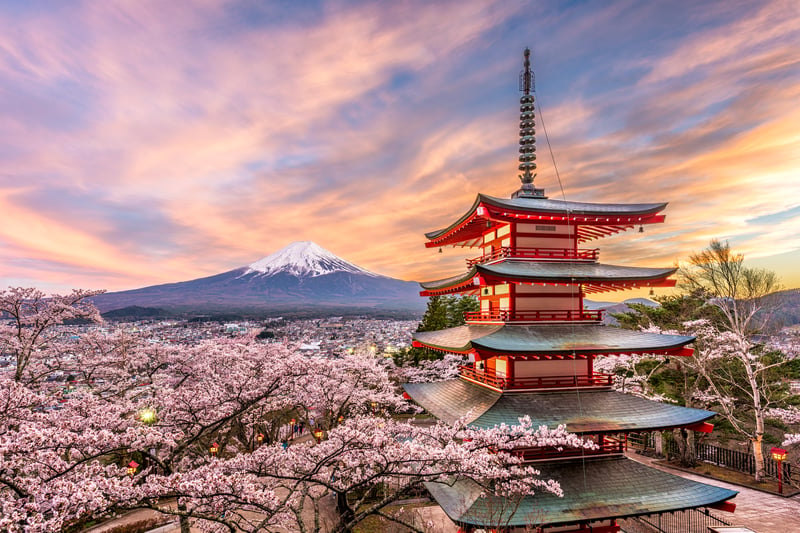 In the previous post of our Ultimate World Cruise Itinerary series, we visited iconic destinations in Asia, including Ho Chi Minh City and the emerald green water of Halong Bay in Vietnam; Victoria Harbor and Victoria Peak in Hong Kong and Ream National Park in Cambodia. Now, we move on to Japan and Southeast Asia.
In the previous post of our Ultimate World Cruise Itinerary series, we visited iconic destinations in Asia, including Ho Chi Minh City and the emerald green water of Halong Bay in Vietnam; Victoria Harbor and Victoria Peak in Hong Kong and Ream National Park in Cambodia. Now, we move on to Japan and Southeast Asia.
The following destinations are the results of a survey carried out by the residents of Storylines luxury lifestyle ship, MV Narrative. The result is a diverse mix of exciting cities and remote, off the beaten path locations. While not set in stone, the itinerary provides a pretty accurate picture of what to expect when the residential cruise ship sets sail. Keep in mind that it’s very possible that other popular destinations such as Bangkok Thailand and Kuala Lumpur Malaysia could be added to the itinerary (although not specifically requested).
The following destinations were requested for Southeast Asian countries:
- Japan
- Tokyo
- Yokohama
- Philippines
- Micronesia and Pacific islands
- Pohnpei
- Kosrae
- Chuuk
- Yap
- Off the beaten path port stops
- Remote islands (natural beauty, uncrowded)
- Raja Ampat
- Bali
- Canggu
- Seminyak
- Ubud
- Nusa Dua
Japan
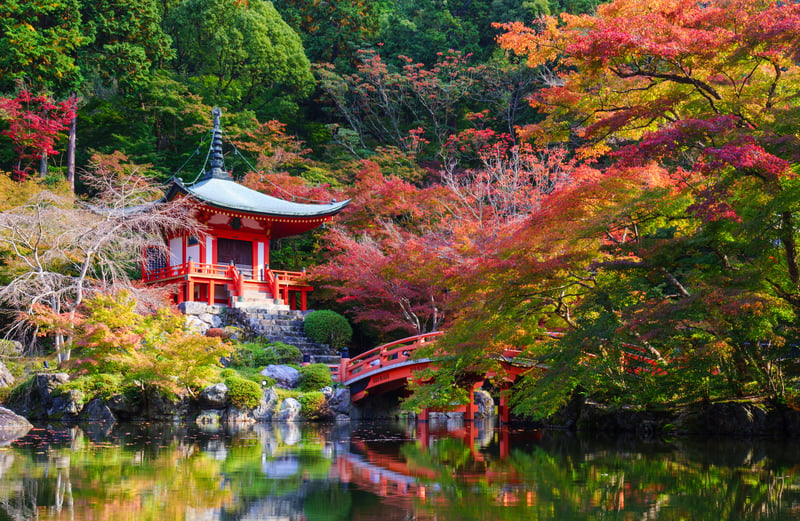
The next stop on the itinerary is Tokyo, Japan. The three destinations requested were Japan, Tokyo, and Yokohama. There's a good chance other Japanese ports could be added, especially Sapporo, for the resident skiers and snowboarders. Tokyo and Yokohama are so close they are a part of one megalopolis, yet each has its individual cruise port.
Yokohama
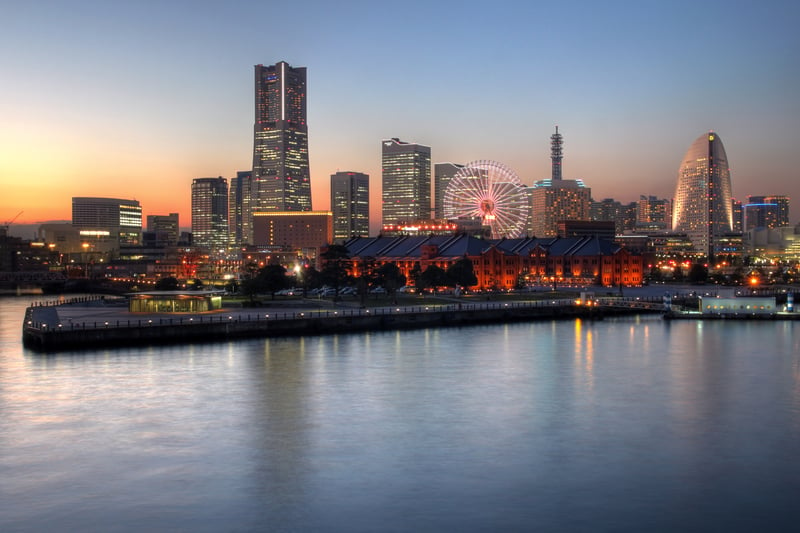
Yokohama is the second-largest city in Japan behind Tokyo. However, Greater Tokyo, which encompasses Yokohama, has an estimated population of 38,140,000 people, making it the biggest city in the world by population. So be prepared for that!
Yokohama is a blend of the old and the new, a cosmopolitan city with Japanese and western cultural influence. The new state-of-the-art Osanbashi Terminal is located in the middle of bustling Chinatown. The people are incredibly hospitable, with the port organizing a farewell ceremony, even handing out free yellow handkerchiefs wishing passengers a safe and happy voyage. It's polite to wave goodbye with your yellow handkerchiefs from the ship's deck.
Yokohama highlights:
- Chinatown: The largest of Japan's three Chinatowns has plentiful Chinese stores and dining in its colorful narrow lanes.
- Sankei-en Garden: If you are a fan of Japanese Gardens, then you simply must head here. It includes ponds, streams, cherry blossoms, bonsais and several historic buildings.
- Ramen Museum: This museum is dedicated to popular Japanese noodle dishes. Learn all about its Chinese origins, how it's made, and, yes, how it tastes.
- Minato Mirai 21: The new Yokohama is a modern downtown district full of high rises and is known as the "harbor of the future". There are many attractions here, including museums, amusement parks, shopping centers, Japanese spas and hot spring baths.
- Yokohama Tower Observation Deck: Head up to the second tallest building in Japan and get the best views over the sprawling megalopolis. On a clear day, you can see Mount Fuji. The architecture is also impressive.
Tokyo
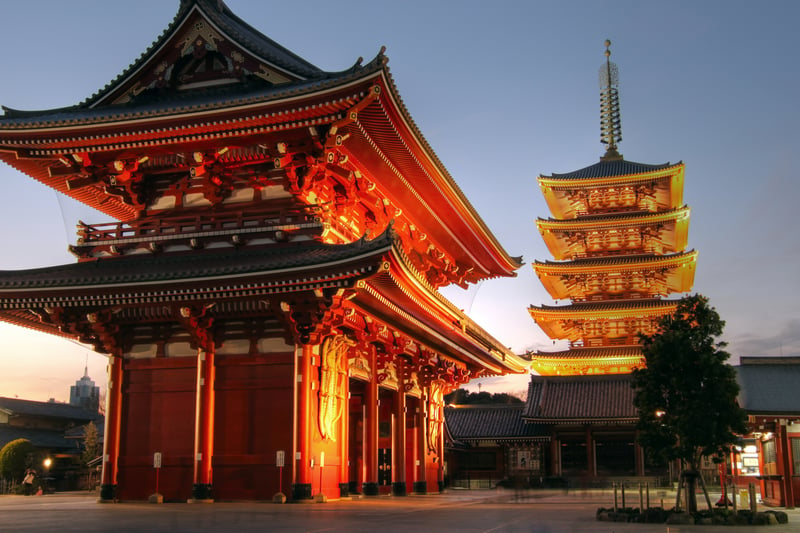
Don't put away those yellow handkerchiefs yet because Yokohama to Tokyo is only an hour away! Tokyo is such an iconic city and a hugely popular international tourist destination. Not surprising, as Tokyo has a lot going for it, including efficient public transportation, a low crime rate, some of the most renowned cuisines on the planet, giant shopping malls, quirky entertainment, sake, and karaoke!
Cruise liners dock at the Harumi Terminal. Guests are welcomed with a welcoming ceremony, including local fire boats and a musical performance! Shuttle buses take you to the closest metro stations, which will get you downtown. Although, here, everywhere can feel like downtown!
Again, Tokyo is vast and best thought of as multiple cities that have grown together to become one. There are so many attractions that it's best not to get caught up trying to tick them all off. The best Tokyo experience comes from wandering around, getting lost, and soaking up the culture. In saying that, here are a few Tokyo staples.
Tokyo highlights:
- Shibuya Crossing: You've most likely seen this intersection on television or in photos; one of the world's busiest pedestrian crossings surrounded by massive video screen advertising and neon lights. Kind of like Tokyo's Times Square. The best time to cross is at dusk at its most flattering light.
- Temples of Asakusa: For traditional Japanese culture, head to one of the most famous and beautiful Shinto shrines in the city. Some of the original moats, walls and guardhouses still exist amongst the immaculate Japanese gardens.
- Gardens of the Imperial Palace: A public park part of the inner palace area and former defense fortification.
- Meiji Shrine: Visit one of the most beautiful and important Shinto Shrines in Japan.
- Shinjuku Gyoen National Garden: This 144-acre park not only features immaculate Japanese gardens but also pockets of French Formal and English Landscape gardens.
- Senso-Ji: Come here for a taste of Japanese culture and breathe in the incense burning from the center cauldron which is said to promote good health.
- Tsukiji Fish Market: The famous and biggest fish market in the world is broken into two sections. One is for business and trade, the other, Toyusu, is where you can try some of the freshest and best sushi on the planet.
- Sumo at Ryogoku Kokugikan: Watch one of these highly entertaining bouts where the large competitors have to force each other to the ground or off the mat.
- Shinjuku's Omoide Yokocho: This ultra-cool narrow laneway is full of little hole-in-the-wall restaurants that only serve a few customers at a time. Experience omakase, where you leave it up to the chefs to decide your meals.
- Mount Fuji: For hiking enthusiasts, consider a two-day Mount Fuji guided tour.
- Karaoke Kan Shibuya: Your ‘when in Rome’ moment; head here and ask for rooms 601 and 602 at Karaoke Kan Shibuya. These were used by Bill Murray and Scarlett Johansson's characters in Lost in Translation and have views looking out onto the neon-lit city.
Off the beaten track - Miyako-jima, Okinawa Prefecture
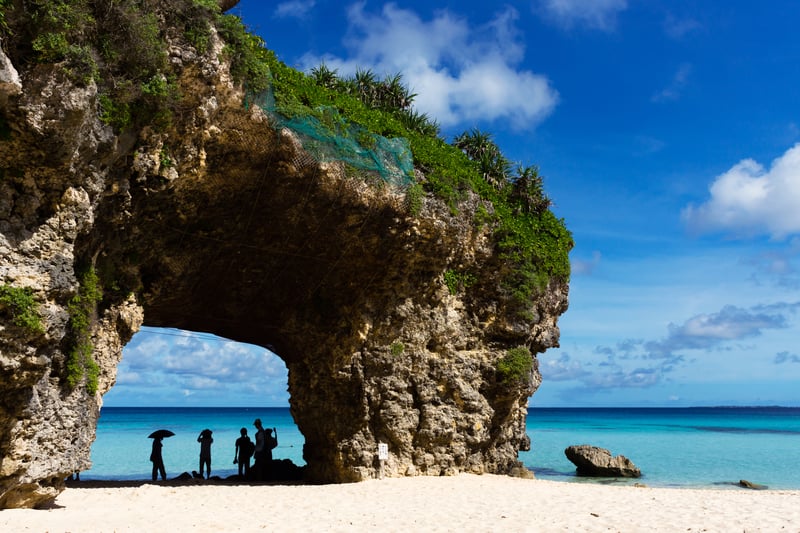
We have also had several requests for “remote islands” and “off the beaten track” destinations. As such, moving forward, we will be offering up some options where MV Narrative can anchor and make use of the ship's Zodiac tenders, which take us to remote islands and reefs where there are no ports. After the bustling megacity of Tokyo, it couldn’t be a better time to start with one of Japan's lesser known island paradises: Miyako-jima.
Miyako-jima’s coastal scenery, white-sand beaches and crystal clear turquoise waters match that of any top island destination worldwide. But what makes Miyako-jima truly special is that for most of the year the island is relatively tourist free. To top it off, the island is made entirely of limestone, meaning that no soil seeps into the sea, making visibility for snorkeling and scuba diving ideal. Furthermore, the underwater limestone makes for some of the best cave-diving on the planet.
And if that's not enough reasons to drop anchor by this gem, it is a part of the Okinawa Prefecture, one of the world's Blue Zones, whereby the inhabitants are some of the longest living on the planet. This bodes well for Storylines with us having a keen focus on longevity wellness.
Miyako-jima must see:
- Yonaha Maehama Beach: This has the reputation of being Japan’s best beach and it’s easy to see why; 7km of white sand and the clearest of turquoise water.
- Sunayama Beach: A tiny beach but the rock formations and bright turquoise waters makes it one of the most aesthetically pleasing on the island.
- Yoshino Beach: A popular beach but great for snorkeling as the coral starts literally meters from the sand and shoreline.
- Shigira Beach: Another small but pristine beach with shallow, emerald green waters perfect for snorkeling.
- Scuba dive sites: For all skill levels, seek out White City, Kijaka Paradise, Hanadai Arch and W Arch for a variety of tropical fish, corals and caves.
- Cave dive sites: For intermediate and up level divers, explore Tori-ike and Antoni Gaudi for epic cave diving.
- Cape Higashi-Hennazaki: Take a walk along the beautiful coastline past pristine coves, reefs and rock formations to the lighthouse at the end of the cape.
Micronesia and Pacific Islands
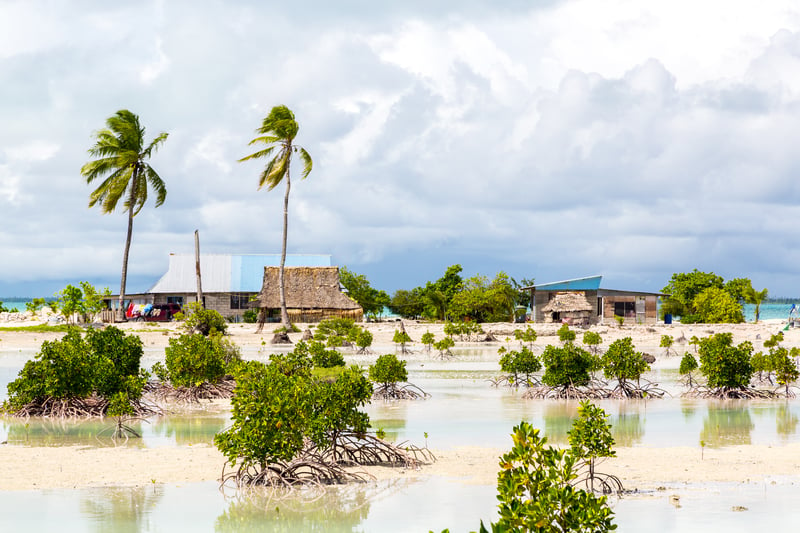
After visiting some of the most densely populated regions of the world, the next leg of the journey may be a welcome relief. You honestly could not get more of a contrast with this lesser known leg of Southeast Asia cruise itineraries: The Federated States of Micronesia (FSM). Not many southeast Asia cruises even venture here. As such, this section could also represent the resident request for, “off the beaten path, not regular port stops”. After all, Micronesia is one of the least visited countries in the world.
The states that make up Micronesia are the four requested destinations - Pohnpei, Kosrae, Chuuk, and Yap, which we will be exploring. There are no ports to accommodate large cruise ships so it’s a perfect situation where MV Narrative could anchor and make use of the onboard marina. The Zodiacs can take you to different spots around the archipelago, including the best dive and snorkeling spots, as well as the islands. These are some of the most remote and unspoiled destinations on the entire itinerary.
Pohnpei Island
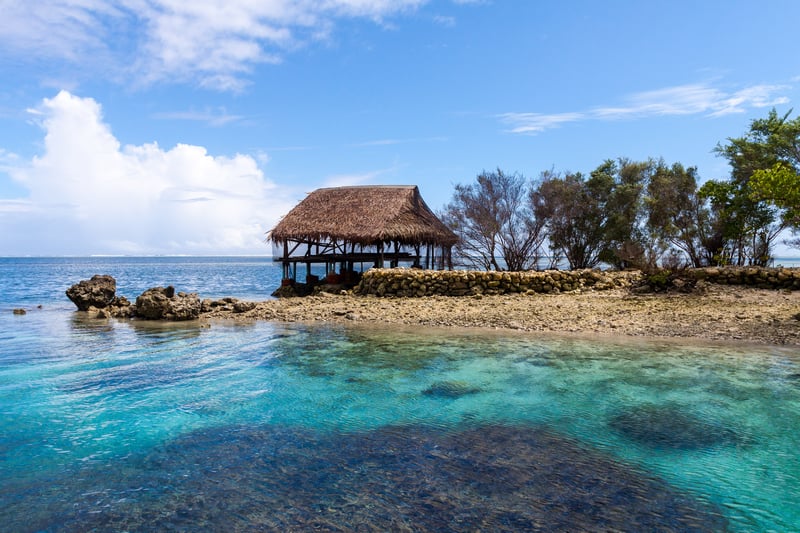
Pohnpei Island is one of the Federation of Micronesia's Senyavin Islands, forming the Caroline Islands Archipelago in the Western Pacific Ocean. Pohnpei is Micronesia's largest island and only one of two islands in the world where the Keima tree can be found. Its valuable wood is used in furniture and flooring, and the tree's highly nutritious nuts are a form of medicine.
Pohnpei Island's Kolonia port is accessible by smaller-sized luxury ships, so we will anchor and you can either tender ashore, or Zodiac to dive spots around the island. Pohnpei is all about incredible nature, both above and below the sea. The best thing to do is head to the Pohnpei Surf Club, where they will handle the logistics for shore excursions. There is something for everyone, including incredible dive spots and hiking to waterfalls and remnants of ancient civilizations.
Pohnpei Island highlights:
- Pohnpei Surf Club: Head here first to plan your exploration of the island.
- Ant Atoll: One of the best dives and some of the clearest water imaginable with plenty of tropical fish, sharks, and manta rays.
- Nan Madol: This center of an ancient civilization will leave you in awe. The mysterious ruins are surrounded by 92 islets, leaving it semi-submerged and can only be explored by a kayaking tour which we highly recommend.
- Kepirohi Waterfall: Easy hike to these falls, featuring colorful tropical flowers along the way. Take a picnic and swim in the lake that the 20m falls drop into.
Kosrae
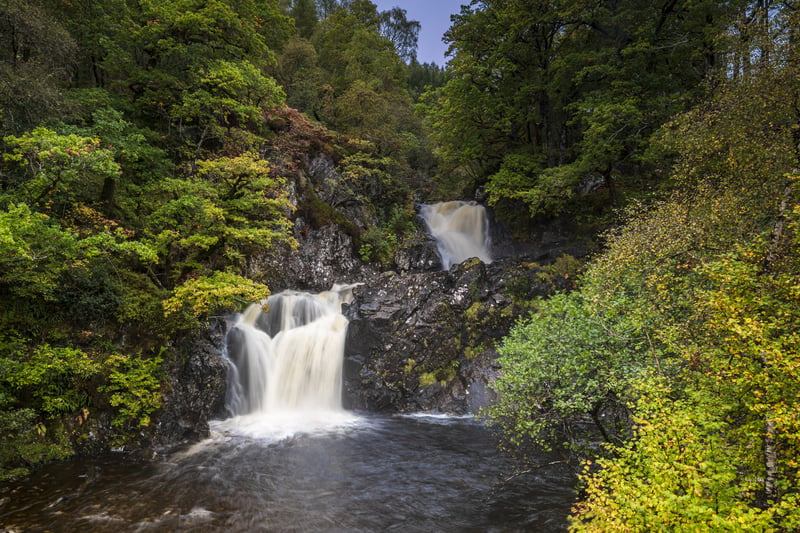
Kosrae is another island state of Micronesia full of history, culture, and an unspoiled natural environment. There is a strong focus on eco-tourism, which presents an excellent opportunity to contribute to environmental conservation initiatives.
On this island of only 1,500 people, there are several interesting historical attractions, hiking trails, and wildlife to experience. You can rent a car here and explore the island yourself. Just remember the national speed limit is only 25 mph (40km/h).
Kosrae highlights:
- Senny's Car Rental: Head here first to rent a car and explore the island.
- Kosrae Museum: Learn about the history through ancient artifacts, restored photos of Kosraean history, and cultural stories. Free access.
- Lelu Historical Ruins: visit this archaeologist's dream and one of the wonders of the Neolithic world.
- Make Historical Ruins: These basalt walls, religious platforms and chambered living quarters offer a glimpse into Kosrae's past.
- Hike Mt. Finkel: This trail is a good challenge for our keen hikers that takes you to Kosrae's highest peak. Must be hike-fit.
- Oma Hiking Trail: A more doable hike that leads you to the once-Japanese command post during WW2.
- Stephen Waterfall: A refreshing 30-foot cascade of fresh mountain waters you can swim under. A photographer's delight.
- With Bird Cave: The bird cave is home to thousands of Island Swiftlets.
Chuuk
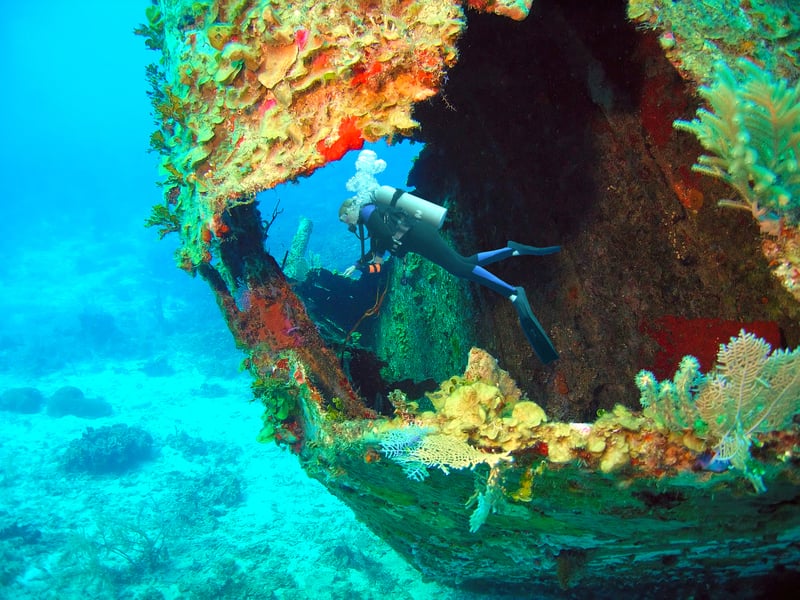
Chuuk is a territory initially part of the Spanish Empire, then German, and finally became Japan's until WWII. Chuuk comprises a sizable 50 by 30-mile barrier reef enclosing a few islands and a lagoon full of shipwrecks. As a result, it is a diver's paradise. However, the Chuuk islands are impenetrable, so there is no tourism infrastructure here. We would either be anchoring close by or accessing the lagoon from Pohnpei. Besides the wreck dives, exploring Chuuk is a do-it-yourself experience for independent adventurers, so this is as wild as it gets!
The wrecks are the result of the area's fascinating WWII history. Operation Hailstone was the 1944 US attack on the Japanese combined fleet stationed in Chuuk Lagoon in retaliation for the attack on Pearl Harbor. Several dozen ships, carriers, tankers, submarines, flying boats, aircraft, and bombers still lay at the bottom of the lagoon.
PADI's Encyclopedia of Recreational Diving lists Chuuk Lagoon as one of four of the world's wreck diving "meccas". For the keen resident divers, this could be one of the most exciting dives you ever take. However, be warned, parts of skeletons, skulls, and bones can still be found at deeper depths.
For those keen on exploring underwater, our Zodiac’s will ferry residents into the Chuuk Lagoon from our anchor position.
Chuuk must see:
- Chuuk Lagoon wreck diving: If you're a keen diver and interested in history, you simply must dive to this underwater museum which features between 50 and 70 wrecks!
- Snorkeling Chuuk Lagoon: Although the best underwater viewing is seen by scuba diving, there are several parts of the lagoon where snorkelers will also find opportunities for wreck spotting.
- WWII sites on land: As the main Japanese naval base in the Pacific from WWI to WWII, several former navy hospitals, commander posts, and other buildings are spread throughout various islands.
- Kayak around Chuuk Lagoon: The lagoon is perfect for exploring by kayak and swimming along the way.
- Fonomu Island: For as close to a Robinson Crusoe experience as possible, head to this tiny tropical island for a few hours or even a night. You will need to organize a 20 minute boat ride from Blue Lagoon Resort, which will leave you a radio as there is no telecommunication on the island.
- Jeep Island: A picturesque tiny remote island with swaying palm trees and a white sand beach.
Yap
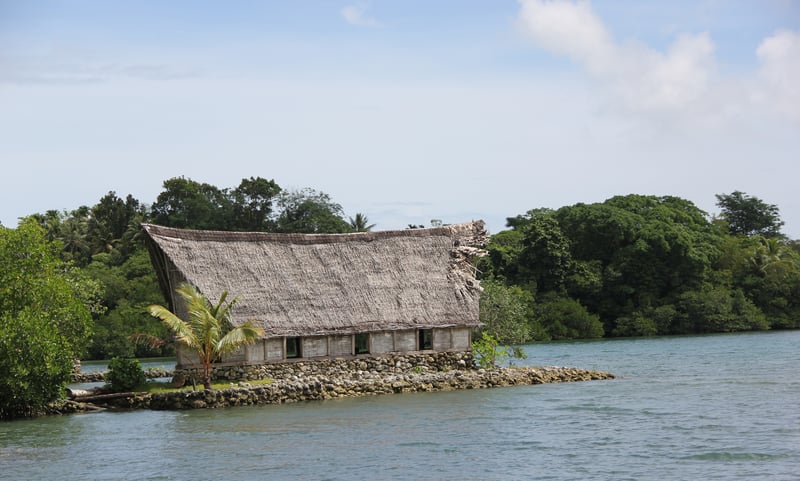
Yap, the last of the four states of Micronesia, is an archipelago of the western Caroline Islands within a coral reef. Yap Island is the largest, heavily wooded, and was a Japanese naval and air base during World War II. Before then, Yap was also under Spanish and then German rule. The island is famous for its stone money, known as Rai, which are donut-shaped carved disks.
Yap features densely vegetated areas, rolling green hills, some beaches, and mangrove swamps lining the shore. It has excellent diving, hiking trails, and an abundance of cultural activities, including a living history museum. Like her sister islands, there are also remnants of WW2 history to explore.
Again, residents can be tendered ashore or taken to dive and snorkeling sites inside the lagoon on the ship's Zodiac tenders.
Yap must see:
- Diving & snorkeling: Inside the lagoons, you will find a rich diversity of tropical marine life, including almost guaranteed manta-ray sightings. You can also expect to see colorful coral reefs and walls teeming with trevally, nudibranchs, sharks, and the popular mandarin fish.
- Kayak the mangroves: Kayak down a narrow canal that cuts through the mangrove forest. For the most tranquil experience, go at dusk or dawn.
- Deep-sea fishing: Fishers keen to bring fresh catch back on board should book a deep-sea fishing charter. Because of the remoteness, fishing here is excellent.
- Hiking & biking: Tamiyog Trail is a two-hour hike that bisects the island and offers incredible flora, fauna, and breath-taking views of the island.
- The Yap Living History Museum: Learn about the history and the significance of the culture of Yap islands through traditional dances, re-enactments, cooking, storytelling, canoe sailing, live arts, weaving, and handicrafts.
- Bird watching: Yap's lush tropical grassland, forest, savanna, and low-lying wetlands attract an abundance of migratory birds. There are also many indigenous species, including the Yap Greater White Eye, Plain White Eye, and the Yap Monarch.
- Roman Forbidden Island: If you dare, you can visit the Forbidden Island, which holds a secret that, well, you will have to find out for yourself...
Philippines
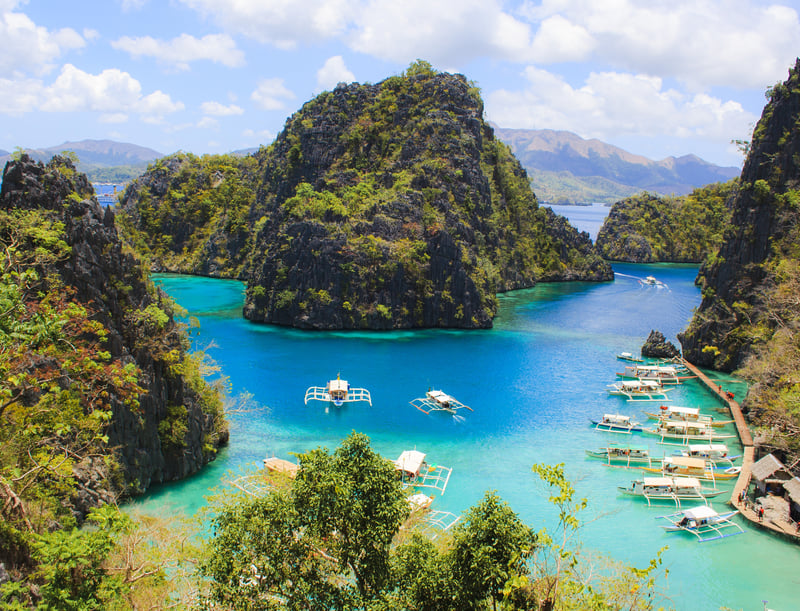 As the Philippines is a very broad request, we have selected the islands of Cebu, Boracay, and Palawan. Both Cebu and Palawan were explored during our first Founders Circle Curated Experience Trip to the Philippines. As a result, Storylines brand ambassadors already have a suggested itinerary, activities, and philanthropic opportunities in store for those residents who wish to participate.
As the Philippines is a very broad request, we have selected the islands of Cebu, Boracay, and Palawan. Both Cebu and Palawan were explored during our first Founders Circle Curated Experience Trip to the Philippines. As a result, Storylines brand ambassadors already have a suggested itinerary, activities, and philanthropic opportunities in store for those residents who wish to participate.
Additionally, due to the vast amount of islands, bays and coves, we will no doubt be dropping anchor in several immaculate locales and exploring by small crafts off the back of our onboard marina.
Boracay
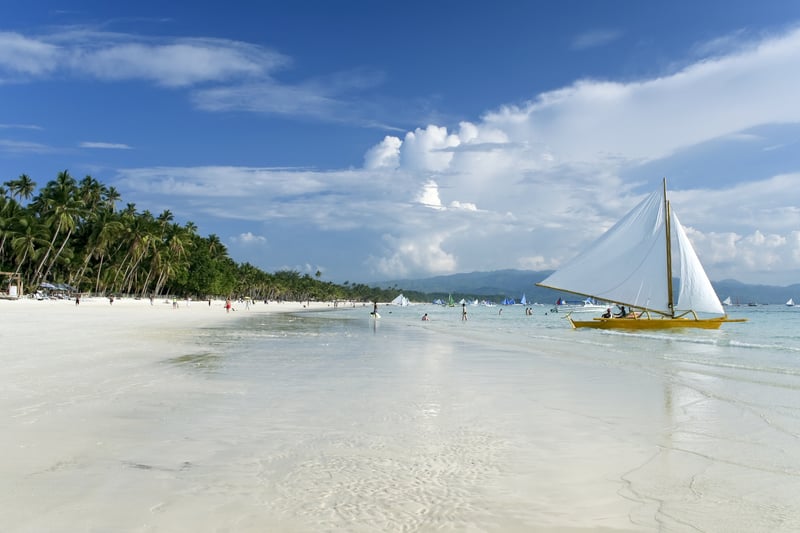
Boracay is a tiny island and hugely popular holiday destination due to its beautiful beaches, abundant flora & fauna, and diverse marine life. It also has a thriving nightlife for those wishing to let off some steam. The island closed in 2019 due to over-tourism but has since opened up after an extensive clean-up. Moreover, they are now restricting the number of tourists so it should be much more pleasant to visit.
The port is located at Caticlan, Boracay's main entry, where only smaller ships can dock. As such, MV Narrative would likely anchor and tender ashore or Zodiac you around to dive and snorkel. From the port, a motorized outrigger will take you the 25-minute boat ride to White Beach, one of two main tourist beaches. The other is Bulabog Beach, which is on the opposite side of the island, about a half mile away. The best way to get around the island is by foot or tricycle (tuk tuk).
Boracay highlights:
- White Beach: You may never leave the powdery white sand and crystal azure waters of White Beach, consistently voted as one of the world's best beaches.
- Flying foxes at Puka Beach: Escape crowds at White Beach for this unspoiled gem, with a lush green forest on a cliff overlooking the beach. If you're around for dusk, you will see the flying foxes emerge from the forest for their nightly migration.
- Water sports: There's an abundance of water activities in Boracay, from banana boat rides to parasailing, paddle boarding, kiteboarding, windsurfing and more.
- Learn to free-dive: The best thing about free-diving is you don't need any equipment besides a mask. Under the guidance of a professional free diver, you can learn your breathing pattern and depth limit in a safe environment.
- Scuba-diving: For those who prefer breathing apparatus, the best scuba spot is off Tambisaan Beach at the south of the island. Also easily accessible for snorkelers.
- Watch the sunset: White Beach is lined with restaurants and bars to watch the incredible sunsets over the sea, some of the most incredible this writer has ever seen.
- Hike Mount Luho: Don't fret; it's not much of a trek in the heat, but at 370ft above sea level, it gives you the vantage point for a panoramic view of Boracay island.
- Off-the-beaten-path beaches: For the lesser-known gems of the island, trek to Manoc-Manoc Beach, Cagban Beach, Punta Bunga, and Banyugan Beach.
Cebu
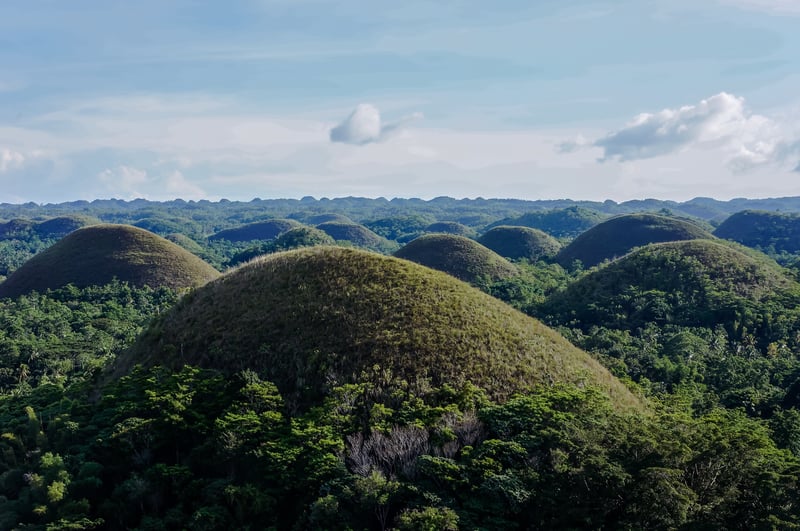
The port of call is Cebu, a location visited by Storylines' Founders Circle members. We will review some of the attractions and activities they engaged in during their whirlwind trip.
Cebu is both a port city and an island known as the Queen City of the South. It is one of the most popular destinations for foreign tourists visiting the Philippines, as well as expats and digital nomads that stay for a while. The port is conveniently located in the center of town, the oldest city in the Philippines. Have a stroll around and take in the blend of modern and traditional experiences.
The following highlights are for both Cebu City and Cebu Island.
Cebu highlights:
- Cebu Heritage Monument: Cebu has an incredible history of battles, invasions, and revolutions. Come to this old monument, an abstract piece of sculpture art, for a crash course in Cebu's history.
- 1730 Jesuit House: Step back 100 years through history in this once hardware store, now a museum, which has survived earthquakes, typhoons and invasions, to learn the fascinating story.
- Swim with whale sharks: This is one of the bucket-list activities our brand ambassadors were fortunate to do at Oslob.
- La Vie in the Sky: A bit of local knowledge from this writer - head up the mountain here for dinner and drinks while overlooking the city lights below.
- Tops Lookout: Head up here for the best panoramic view of the whole of Cebu City. At night time it is equally impressive with the sprawling city lights below.
- Cebu Taoist Temple: Climb the 81 steps to one of the most famous landmarks in Cebu, the colorful and multi-tiered Taoist Temple.
- Hike to a volcano: Another of the activities on the curated trip was hiking to the active volcano in Talisay, an incredible connection to nature.
- River cruise in Loboc: Loboc is located on the neighboring island of Bohol and offers excellent river cruises along its jade-green waters.
- Chocolate Hills (pictured): Also located on Bohol, these unusually shaped hills in the middle of the island resemble, well, chocolate hills.
Palawan
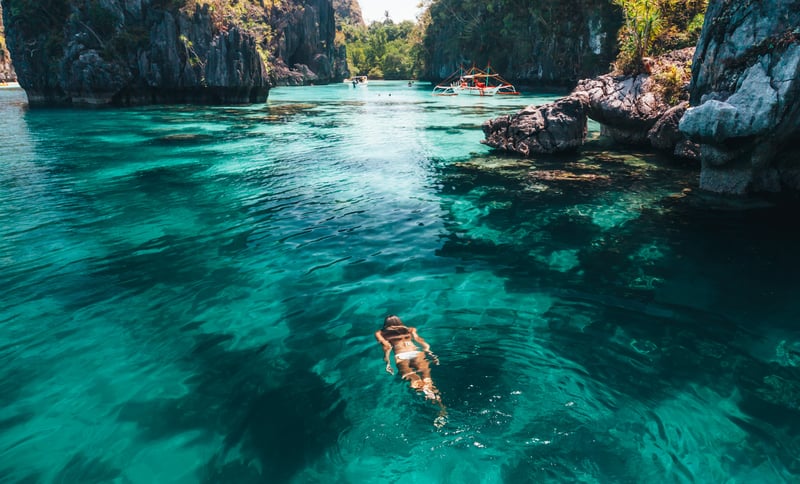
When you arrive in Palawan, there is usually a welcoming ceremony at Puerto Princesa Cruise Port, located only 1.5km from the city center; a pleasant walk. If you are not up for walking in the heat, there are plenty of tricycles around. You can do a one-hour tour of the town for $10. Just check that your driver speaks English.
But the best spots are on other parts of this large island, such as El Nido (pictured) and Coron. There are chances MV Narrative could anchor close to these locations and we could explore by zodiac.
The following highlights are for Puerto Princesa City and Palawan island.
Palawan highlights:
- Underground River of Palawan: One of the highlights of the first resident curated trip, and one of the best attractions in the Philippines, this UNESCO World Heritage site and the new seven natural wonders of the world cannot be missed. It's not just about the 8.2km-long underground river cruises. It features limestone karst formations, large stalactites, and a pristine forest with various birds, reptiles, and mammals.
- Puerto Princesa beaches: There are several quality local beaches if you feel like chilling, swimming and sunning yourself. Seek out Sabang Beach, Nagtabon Beach, and Talaudyong Beach.
- Crocodile Farm: Support crocodile conservation by visiting the Palawan Rescue and Wildlife Conservation Center and watching these fascinating prehistoric predators.
- Iwahig Prison and Penal Farm: For those seeking something a little different, head to this penal farm to hang out with the prisoners. Never fear; it's perfectly safe. They will put on a show for you and they make and sell handcrafted souvenirs.
- El Nido (pictured): You will need to arrange shuttle bus for the 4-hour drive to El Nido, but it's worth it. Here you can do boat tours through the incredible nature reserve with towering limestone cliffs, secret lagoons and hidden beaches.
- Coron: Along with El Nido, Coron is one of the Philippines top attractions. Well-known for its WW2 era-wreck diving, limestone cliffs and aquamarine lagoons.
Indonesia - Raja Ampat & Bali
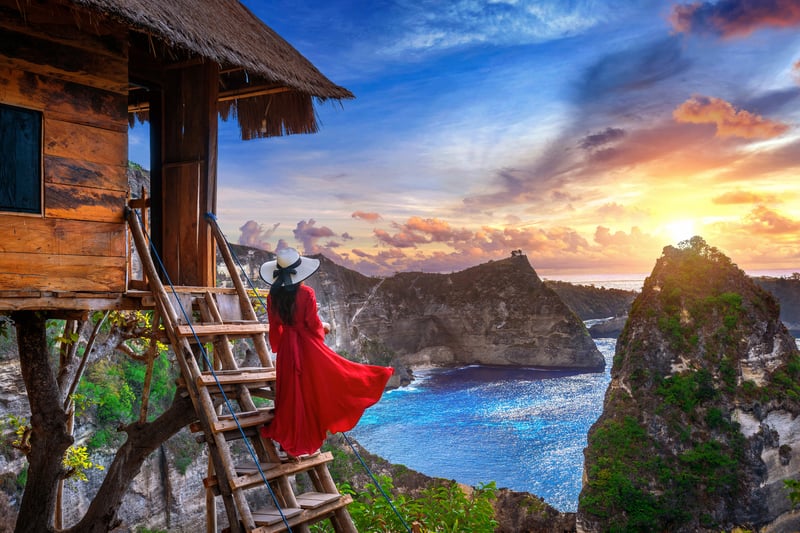
Just when you thought we couldn't get any more remote, we make our way to arguably the most unspoiled tropical paradise in the world; Raja Ampat. Situated in West Papua Province of Indonesia, Raja Ampat also represents our residents' request for, “remote islands, natural beauty, uncrowded”. If there’s a time to jump into the pristine waters off the back of the onboard marina, this is it.
Afterward, we head to the ever-popular Bali, where someone has either done their homework or been there, because they've requested the hotspots of Seminyak, Canggu, Ubud, and Nusa Dua.
Raja Ampat
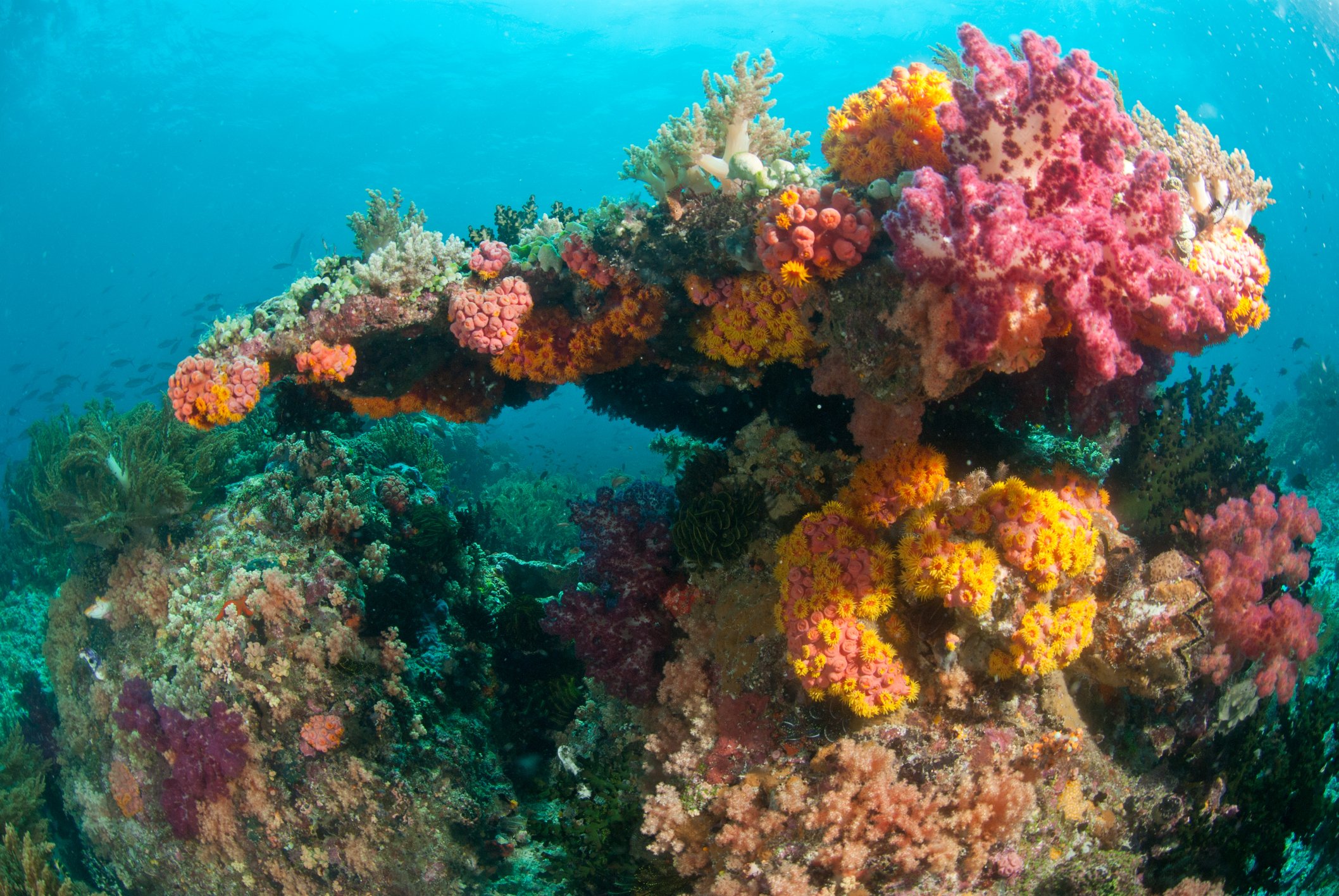
Raja Ampat is a hidden gem and the most eastern Indonesian archipelago island. It comprises over 1,500 small islands, shoals, and cays surrounding the four main islands, known as The Four Kings; Batanta, Salawati, Misool, and Waigeo. It's possible MV Narrative could anchor close by to one of these islands, and residents venture out from the marina on kayaks, jet skis, paddle boards, or any of the other boats available. They look ideal for exploring that way and if there's one true paradise on earth, Raja Ampat is it.
There are no ports here, so MV Narrative will find a pristine, picturesque bay for you to wake up in, before exploring the archipelago. Snorkeling and diving will be on the cards as the reefs here have some of the most colorful coral in the world. Across the 9.8 acres of land and lagoon, there are 540 types of corals, 700 kinds of mollusks and over 1,000 species of tropical fish. According to a study by The Nature Conservancy and Conservation International, about 75% of the world's marine species live here. Dive in!
Raja Ampat highlights:
- Scuba dive and snorkel: Our keen resident divers and snorkelers are in for a treat. The underwater wonderland features bright, colorful coral, pygmy seahorses, manta rays, wobbegongs, dugongs and turtles. Schools of tuna, snappers, batfish, giant trevallies, and barracudas are abundant. There are so many diving and snorkeling spots that we cannot list them all. But a few to seek out are Kabui Passage, Arborek Island's Dock, Yenbub, Sawandarek and Friwen Wall.
- Wayag Island: The scenery above the water is just as spectacular. Here you will find amazing rock islets amidst the clear blue water that offers some of the most spectacular sceneries on earth.
- Arborek Tourism Village: Visit here to meet and mingle with the Papuan, the local people who will perform a traditional dance to welcome you at the dock. Observe their daily life, customs, and traditions. Homestays are available.
- Hike Pianemo: As you arrive at the jetty, you will see a set of stairs heading straight into the forest. The view from the top looking down over Raja Ampat is where Mother Nature created her finest artwork.
- Disconnect: If there's ever a place in the whole itinerary to truly disconnect from it all and reconnect with nature, Raja Ampat is it.
Bali
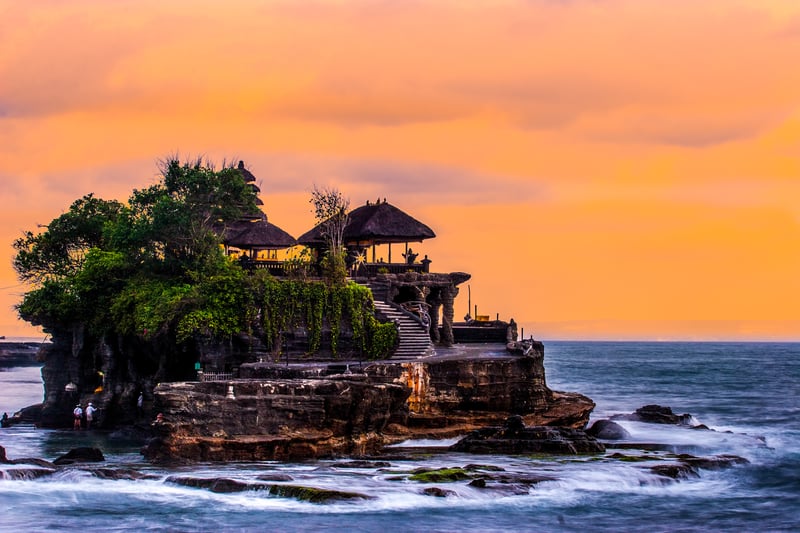
Bali is an island of Indonesia with a rich culture and a hugely popular tourist destination, especially for its southern neighbors, Australians. The capital is Denpasar, and cruise ships dock at the Port of Benoa, where you will be greeted by traditional Balinese dancing. You can catch taxis to the Seminyak, Canggu and Nusa Dua for around $30USD. Ubud is further inland, and you may need to negotiate on price or arrange a tour.
The best thing about Bali is there's a place to suit every type of personality, whether it be the creatives and entrepreneurs in Seminyak, or the digital nomads and surfers in Canggu. Then you have the spiritual yogis in Ubud, the holidaying families in Nusa Dua, and the Aussie bogans in Kuta. There's somewhere for everyone, including ancient temples spread across the island.
Seminyak
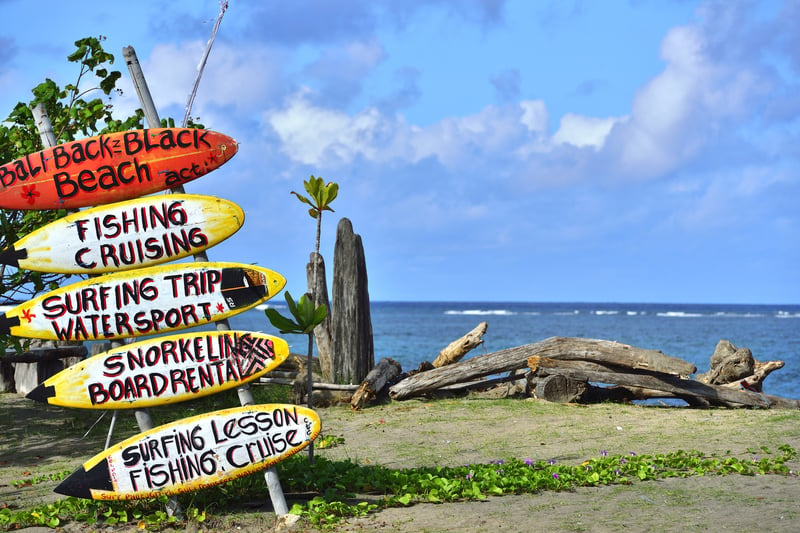
Seminyak is located along the bustling Kuta Beach and is thought to be what Kuta was thirty years ago; trendy but too busy and overcrowded with tourists. The beach has some waves and you can rent surfboards here, but the natural appeal of Seminyak is the village itself. It boasts some excellent shopping, both local and western boutiques. It also boasts a thriving nightlife and some super-cool beach clubs with bars and pool lounges perfect for watching the sunset over the sea. One popular establishment is the Potato Head, serving excellent food and cocktails. Another one is Ku De Ta, with another great menu and cocktail list which is also known to host some epic parties.
For those looking for something a little cultured, the Nyaman Art gallery is an excellent place if you are interested in art and supporting the local arts scene. Most artworks are by local Balinese and Indonesian artists focusing on supporting emerging talent. A trip to Bali is not complete without a visit to a temple. One such temple in Seminyak is Pura Petitenget, one of several temples that line the Bukit Peninsula. If you get a chance, visit the Pura Tanah Lot at the end of the peninsula, their most famous island temple.
Seminyak Highlights:
- Coffee at Revolver: For coffee lovers, it doesn't get any better in Bali than Revolver's
- Lounge by the pool at Potato Head: This is a great place to relax, eat, drink, and people-watch.
- Nyaman Gallery: Dedicated to local and Indonesian artists.
- Surfing: For surfers on board, Seminyak can get some good breaks. Alternatively, book a tour to one of the reef breaks (recommended).
Canggu
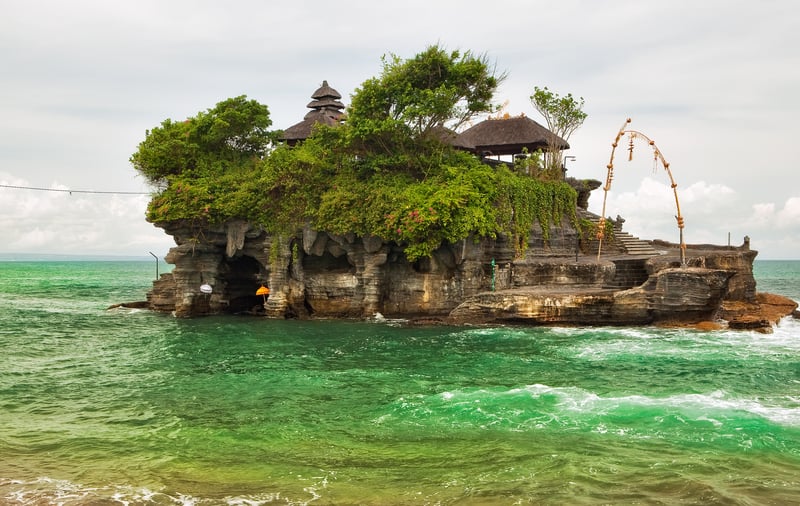
If Seminyak is the new Kuta, then Canggu could be the new Seminyak. Located further down the peninsula, the trendy locales keep spreading out from Kuta. The further you get out from Kuta, the more chill it seems to get. Canggu is like Seminyak, but less built up and with a more laid back vibe. It also appears to be the new destination hot spot for expats and digital nomads. Here, you will see the keyboard warriors working away from a western-style cafe. Bali is one of the most popular digital nomad locations globally because of its low cost of living, cruisy beachy lifestyle, decent internet and relaxed visa policies.
It's easy to see the appeal of Canggu as it has not succumbed to over-development like Kuta or Seminyak. And it still keeps its traditional Balinese charm with original architecture and rice fields mixed with modern villas and hip cafes. There's no hotel in sight here, so you'll need to rent a villa if you decide to stay in Canggu.
Canggu must see:
- Tanah Lot Temple: Take a trip to Tanah Lot, an iconic temple built on a tiny island just off the coast. They also hold markets there where you can pick up local merchandise.
- Rent a scooter: The best way to explore Canggu is by scooter.
- Finns Beach Club: Have sunset cocktails at one of two swim-up pool bars at Finn's.
- La Laguna Gypsy Market: Shop at over 150 stalls selling ecological and organic products.
- Dine out: Many great restaurants; favorites include Hungry Bird, Warung Bu Mi, and The Shady Shack.
Ubud
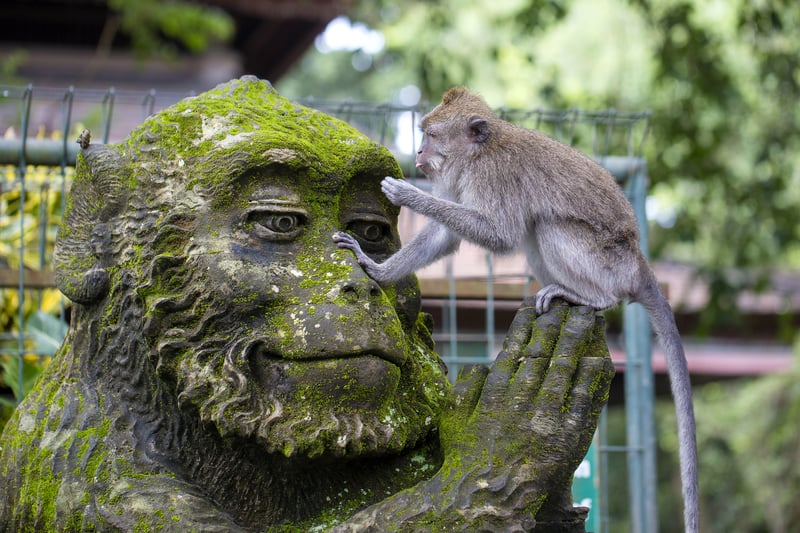
Ubud is another hip place, but unlike the beachside suburbs of Seminyak and Canggu, Ubud is located in the middle of the island in the jungle. So if you do not care much for the beach, Ubud might be your place. This charming town perched in the scenic highlands attracts artists and creatives worldwide. It has developed a unique artistic culture shaped by local and expat influences.
Ubud and surrounds is the location of many of those photos of the quintessential Balinese rice fields leveled down lush sloping landscapes. One must-see place is Tegalalang Rice Terrace, an iconic Balinese site where you take in the incredible scenery on the walking trails. Visit the villages, and meet the locals who built and maintained the rice terraces.
We recommend hiring a bicycle and exploring Ubud by riding on the bike paths through the rice fields and villages. You can even do a guided walking tour. Other attractions include the Ubud Monkey Forest, reclining buddha, the extremely healthy cuisine, and plenty of yoga. If you are into health, wellness, and nature, then Ubud is your jungle paradise. Here's some expert advice.
Ubud highlights:
- Tegalalang Rice Terrace: Must-visit textbook Bali destination for the Instagram pics alone.
- Campuhan Ridge Walk: Escape the traffic with this lovely walk with views of the rice fields and down the valleys.
- Saraswati Temple: Another tranquil escape from town is this temple with a serene lotus pond.
- Kecak dance performance: A local traditional dance performance at the temple in Junjungan village.
- Practice Yoga: Any of you who have read or watched Eat, Pray, Love will know that Ubud is the world's yoga capital.
- The Monkey Forest: Take a walk through this mystical forest full of, yep, you guessed it, monkeys!... Hold onto your phone.
Nusa Dua
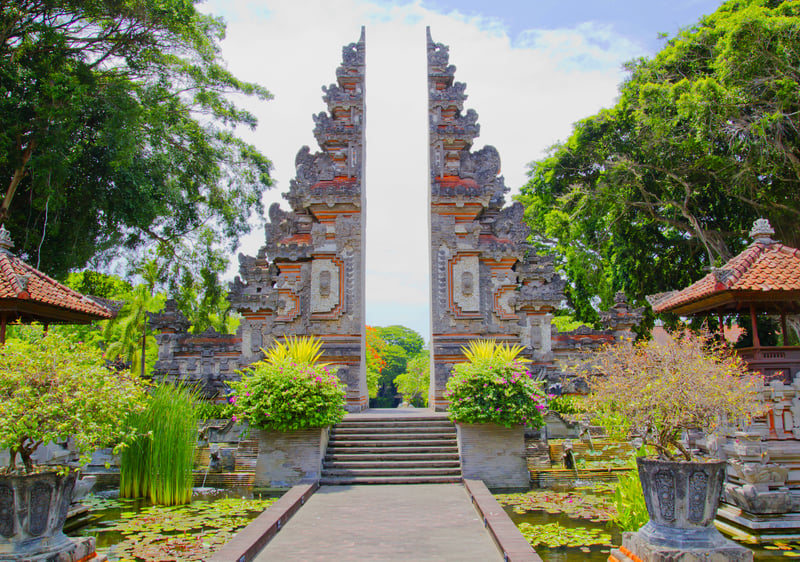
Nusa Dua is an entirely different experience as it's a resort beach. Located on the opposite coast, Nusa Dua mainly caters to vacationing couples and families looking for a high-end resort experience. The beaches here are more manicured and have clearer water than on the Kuta side, making it ideal for swimming, snorkeling, and diving. This tourist resort area is like a gated community and a world away from the hustle and bustle of the rest of Bali.
However, if you are staying here and wish to try something more authentic than resort life, then be sure to dine at the Nusa Dua Beach Grill. Here, you will get the freshest seafood, straight from the sea to the grill to your plate. You eat on the beach, looking out at the turquoise waters while feasting on fish, crab, prawns, and lobster. Pair it with some white wine, and life couldn't get much better.
Besides all the activities resorts bring, such as spa treatments, water sports, and golf, you can also arrange comprehensive tour packages that take you to Bali's main sights, including incredible waterfalls.
Nusa Dua must see:
- Water Blow: There is a platform that takes you to the cliff's edge as you can watch this massive blow hole erupt from below as it shoots water up above you and sometimes on top of you.
- Beach camel ride: Take a leisurely camel ride along the seashore from Nikko Bali Resort.
- Pura Geger Temple: this most famous of Nusa Dua attractions is located behind the iconic Geger Beach, which is a destination in itself.
- Pirates Bay: This one is for the kids where they can play on a large-scale model of a pirate ship while you enjoy meals and drinks in a pirate-themed restaurant on the beach.
About Storylines
Storylines is a luxury residential ship with a like-minded community of globally-conscious citizens traveling the world. We seek unique experiences, cultural events, and community participation while practicing and promoting sustainable travel. To learn more, visit our website.
Disclaimer: The ultimate world cruise itinerary blog post series explores some of the requested destinations of our community of global citizens on board Storylines MV Narrative. It is for inspiration only at this time and the final itinerary has not yet been set. Further information in our FAQ.


